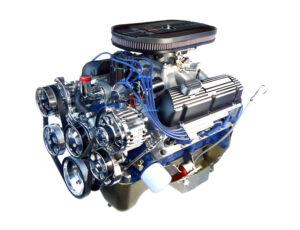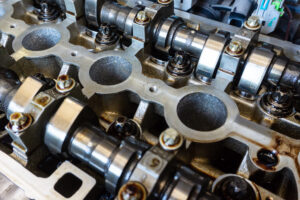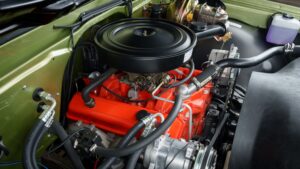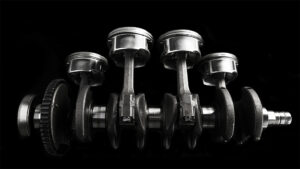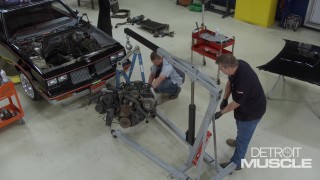Did You Know This About the Hemi?
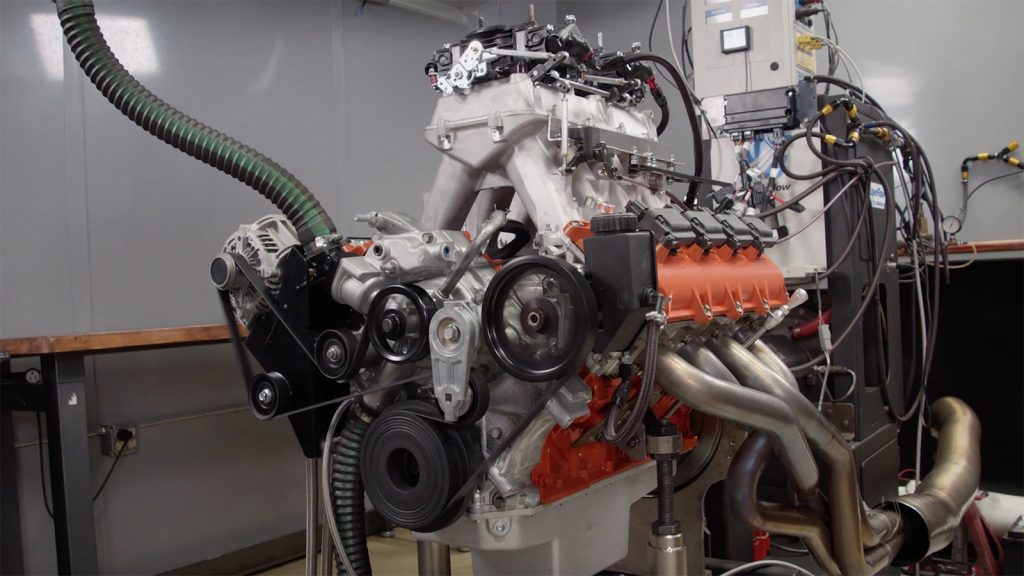
“Is that thing a Hemi?” That famous commercial hasn’t run for many years, yet it’s a phrase a sizable chunk of the adult population can recite without skipping a beat. There’s no denying the genius of their marketing, but in order for it all to work, the product needed to be top-notch. Fortunately, that wasn’t a problem since they were advertising one of the greatest engines ever produced.
What Is a Hemi?
Hemi is a casual term used to describe an engine with a hemispherical combustion chamber. Despite being heavily rooted in Chrysler, you might be surprised to find out they weren’t the original inventors. That claim to fame belongs to Allie Ray Welch.
One of the most notable features of a Hemi is that the intake and exhaust valves are on different sides of the chamber. The result of this? Improved airflow, allowing for enhanced engine performance.
The head in the Hemi’s cylinder is spherical, and the strategic position allows for a minimized burn distance of the air and fuel mixture. It’s a highly efficient engine, and the primary power lies in the head of the cylinder near the spark plugs.
The Hemi is unique because of its efficient combustion chamber, making it more powerful than other engines. Hemi’s have dome-shaped pistons with angled valves, and the modern iterations have two sparks per cylinder.
Hemi engines are known for their efficient combustion, and take advantage of the energy from the incoming air and fuel mixture.
Advantages of the Hemi
The Hemi boasts three distinct advantages over its competitors – power, reliability, and enjoyability.
Due to its unique design, the Hemi can offer more power than others, and they’re also known to be reliable in the long term. Driving a car or truck equipped with a Hemi is going to be quite the experience as it whips you into your seat and provides a soundtrack many others can’t match, which Mopar fans will argue that the Hemi does better than the competitors.
Other advantages include:
- Efficient combustion of fuel.
- Angled valves that allow for larger diameter valves not restricted by bore size and significantly decreased shrouding from the cylinder wall due to the valves angle.
- Substantial intake of air through the intake manifold.
Disadvantages of the Hemi
Despite its fame and cult-like following globally, the Hemi has a few disadvantages worth mentioning.
For one, its design causes it to be heavier than traditional engines, leading to some performance lag despite its extra horsepower. They’re also expensive, which is standard from an engine that generates more power than the competition. Lastly, it doesn’t scream fuel efficiency because of that power. However, if you’re driving a high-powered car, you probably aren’t too worried about your fuel mileage.
One of the primary issues that plague the Hemi is its limited valves, which puts a cap on peak performance. Having four smaller valves lets it breathe more, but Hemi’s only have two.
Another disadvantage is the packaging. In order to fit the valvetrain around the chamber, Hemi’s are typically wider than conventional pushrod engines, which poses some problems.
Hemi Origins
The first proper Hemi was built in 1948 by Harry Westlake, who developed a six-cylinder version for Jaguar, which he later followed by a more potent 180 horsepower V8 engine in the 1950s.
We know, with 1000 horsepower here and 1000 horsepower there as the norm today, extracting 180 out of a V8 may not seem like much, but back then? That was some power. The original Chrysler Hemi made way for a 426 that produced an impressive 425 horsepower, which is a lot, even by today’s standards. In fact, it was too much power, causing NASCAR to ban it after one season. Only 11,000 of those were produced, so if you have one today, make sure to hold onto it.
Despite its sheer dominance, the Hemi took a 30-year hiatus before Chrysler revived the third-generation iteration of the Hemi in 2003. At that time, the 5.7L V8, with its 345 horsepower and 375-pound-feet of torque was just as impressive as it was when the Hemi was first released with 180 horsepower. An updated version, the 6.1L V8, was launched in the mid-2000s, which was later replaced by the 6.4L V8 Hemi. In 2015, a 6.2L V8 was developed for their Hellcat. These variants come supercharged and deliver gaudy performance.
In the early 2000s, the Hemi went through what is known as the “torture test,” which is another reason it’s so beloved by Mopar fans and enthusiasts alike. The Hemi was run at full throttle without oil for hours and passed with flying colors. The concept of this engine is one that continues to evolve and change the landscape of modern engineering.
As we shift away from performance V8’s, the Hemi continues to be a trusted and reliable engine that’s thrown into everything. Some have gone as far as saying the Hellcat conversion is the new LS swap. It’s not hard to see how these engines have gained notoriety over the years and gained the respect of enthusiasts from all backgrounds. The Hemi will continue playing a vital role in racing for years to come and won’t be fading out anytime soon.
Want to read more articles like this?
Join the PowerNation Email NewsletterRead More from PowerNation
- Chapters
- descriptions off, selected
- captions off, selected
This is a modal window.

